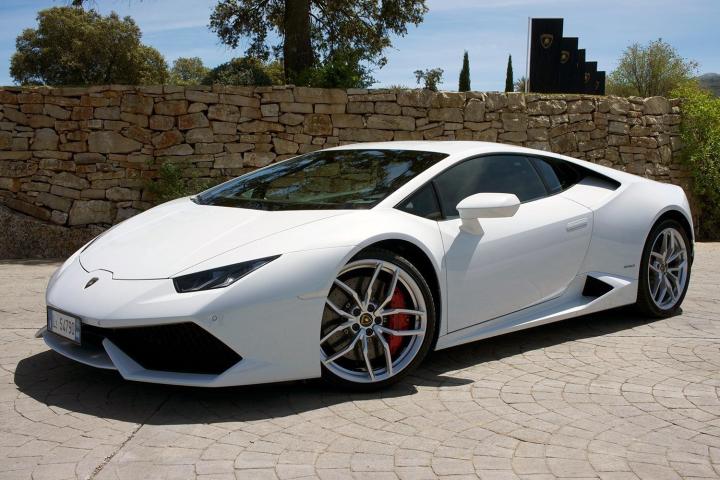
The Lamborghini bull has stood for many things over the years: performance, extreme styling, and insanity. But motorsports excellence has never really been part of the Lamborghini oeuvre. That is starting to change, and the new Huracán is at the forefront.
Lamborghini started the Super Trofeo racing series in 2009, with the Gallardo. And it has been a lot of fun to watch the Monaco playboy go out and trade rubber on a race track, but it hasn’t been quite as serious as Lamborghini’s neighbor and rival Ferrari’s racing series.
The introduction of a new Huracán means this race series is about to get much more serious, and a hell of a lot faster.
The racing version, dubbed the Huracán LP610-4 Super Trofeo will keep the same 5.2-liter 602 horsepower V10, and all-wheel drive system as the stock car but little else. Undoubtedly the car will be stripped out to reduce weight and suspension improvements that are less focused on keeping your spine from shattering on cobblestones and more focused on keeping racing drivers from getting airborne.
All the redesign and development work will be sheparded along by racing drivers, from the awesomely named Squadra Corse racing team, Adrian Zaugg and the appropriately Italian Fabio Babini. Babini ought to know a few things about how to get the most out of the Huracán, after all he has won the GT class at Le Mans.
Frankly, I can imagine few things more exciting than watching angry Italians racing stripped out Huracáns on the track. It may not have quite the pedigree of Ferrari racing series, but then again it’s Lamborghini; the point isn’t he pedigree, it’s the fun.
Editors' Recommendations
- Lamborghini is putting race cars in your living room. Hop in and drive one
- Lamborghini’s Huracán Sterrato concept is pure rally-ready awesomeness


